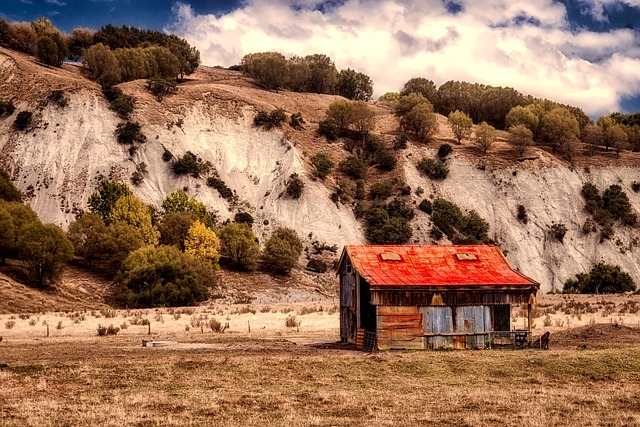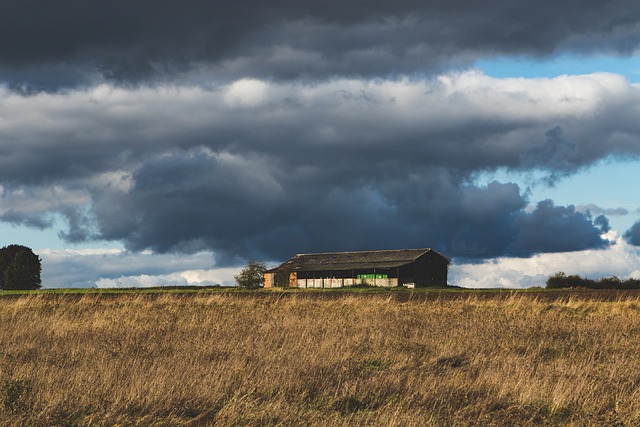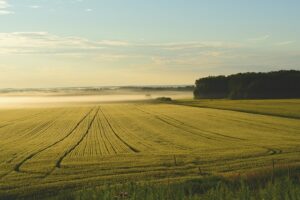Farm Sheds are integral to modernizing and enhancing efficiency in agriculture within the Riverina region of New South Wales. These substantial structures provide all-weather protection for machinery and equipment, which extends their lifespan and cuts down on maintenance costs. Inside these sheds, farmers can store crops, feed livestock, and park vehicles, thereby saving on transportation and handling expenses. The strategic placement and design of farm sheds also improve the organization of farm activities and streamline workflows. Adapted to Riverina's climate, farm sheds offer features such as high ceilings, wide doors for machinery access, and ventilation systems to ensure a comfortable working environment. Their robust construction stands up to local weather challenges like strong winds and flooding, making them an indispensable asset. Investing in durable farm sheds reflects the commitment of Riverina's farmers to operational excellence and high productivity. These structures are not just storage facilities but are a testament to the evolution of agricultural practices, enhancing sustainability and efficiency in farming operations. The use of steel in construction, due to its resilience against environmental factors, is favored for its longevity and low maintenance requirements. Strategic design elements like roof shapes, orientation for natural light and ventilation, roller doors, secure locking systems, and windows all contribute to the functionality of farm sheds, which can be further customized with modular or pre-engineered solutions for future adaptations.
Explore the transformative role of large farm sheds in the Riverina region of New South Wales, where innovation meets tradition. This comprehensive article delves into the multifaceted benefits and considerations for integrating efficient farm shed solutions into the agricultural landscape. From maximizing efficiency and enhancing crop storage to managing livestock and embracing sustainable construction practices, discover how these structures are reshaping the farming industry in NSW. We’ll explore design and material options tailored for the Riverina’s unique environment, eco-friendly features for a greener footprint, and cutting-edge technologies that bolster climate resilience. Additionally, we’ll navigate regulatory challenges, strategic planning for layout optimization, and the importance of ventilation and natural lighting. Learn about economic impacts, maintenance best practices, and how technology can be leveraged to future-proof your agricultural operations. Join us as we examine case studies showcasing successful farm shed implementations and offer insights into safety, insurance, and community engagement within this vital sector.
- Maximizing Efficiency with Large Farm Sheds in the Riverina NSW
- Design and Material Considerations for Optimal Farm Sheds in the Riverina Region
Maximizing Efficiency with Large Farm Sheds in the Riverina NSW

In the expansive agricultural landscape of Riverina NSW, large farm sheds emerge as a cornerstone in maximizing efficiency for farmers. These substantial structures offer an array of benefits that align with the demands of modern farming practices. By utilizing farm sheds, farmers can protect their machinery and equipment from the harsh elements, ensuring longevity and reducing maintenance costs. The ample space within these sheds allows for streamlined operations, as crops, livestock feed, and vehicles can be stored under one roof, minimizing the time and resources spent on transportation and handling. Moreover, strategically placed farm sheds in Riverina can serve as focal points for various farming activities, facilitating better organization and workflow optimization.
The design of these farm sheds is tailored to meet the specific needs of the region’s farmers. With consideration for the local climate, these structures are often equipped with features like high ceilings and wide doors to accommodate large equipment, as well as ventilation systems to maintain a comfortable working environment during warmer months. Additionally, the use of durable materials ensures that the sheds can withstand the strong winds and potential flooding that Riverina sometimes experiences. By investing in robust and versatile farm sheds, Riverina’s farmers are well-positioned to enhance their operational efficiency and maintain high productivity levels throughout the year.
Design and Material Considerations for Optimal Farm Sheds in the Riverina Region

In the Riverina region of New South Wales, the design and construction of farm sheds are pivotal to accommodating the unique environmental conditions and agricultural activities that define this area. Durability is paramount when selecting materials for these structures; materials that can withstand the intense UV radiation and the occasional harsh weather systems that sweep through the region. Steel remains a popular choice due to its longevity, resistance to pests and rot, and low maintenance requirements. When designing farm sheds in this context, the orientation of the shed should optimize natural light and ventilation, while also providing adequate shade to protect stored equipment and crops from heat stress. The roof design is particularly crucial, with options such as skillion or gabled profiles aiding in rainwater collection and reducing thermal gain.
The layout of the farm shed should be tailored to the specific needs of the operation, whether it’s for storing machinery, housing livestock, or providing covered areas for crop storage and processing. The integration of features like roller doors, high-quality locking systems, and windows positioned for cross-ventilation further enhance the functionality and practicality of these sheds. Additionally, considering the size and scale of operations in the Riverina, the use of modular or pre-engineered building solutions can offer both cost-efficiency and flexibility to expand or modify as the farm’s needs evolve over time. Attention to detail in the design phase ensures that farm sheds are not just shelters but are integral parts of efficient and sustainable farming practices in the Riverina.
In conclusion, large farm sheds represent a significant investment for farmers in the Riverina NSW, offering enhanced efficiency and protection for agricultural operations. Careful consideration of design and materials tailored to the local climate and terrain ensures these structures not only withstand the demands of farming but also contribute to the sustainability and profitability of the region’s agricultural sector. By leveraging advanced construction techniques and durable materials, Riverina farmers can reliably house their livestock, store equipment, and manage crops effectively throughout the year. These farm sheds stand as testaments to innovation and resilience in Australia’s farming heartland.
